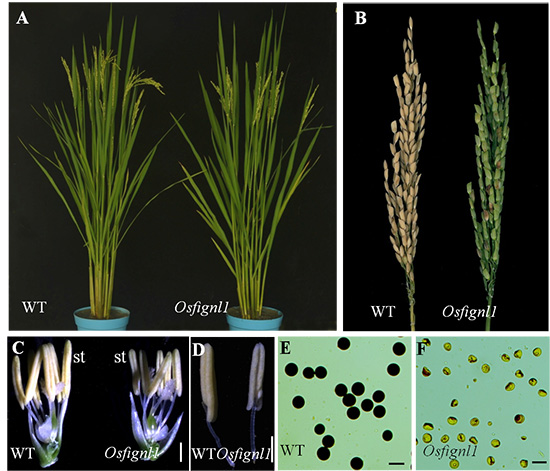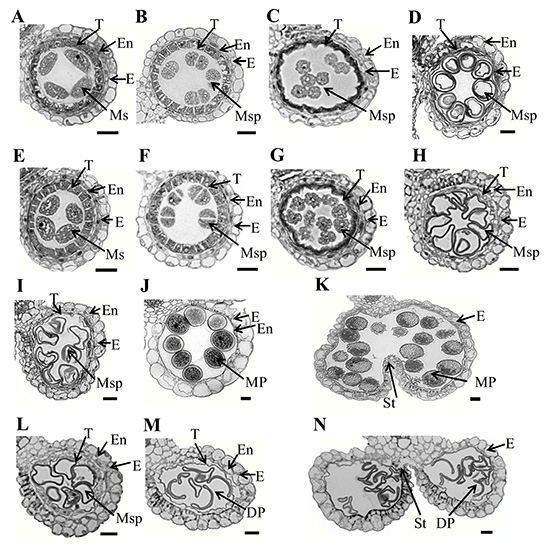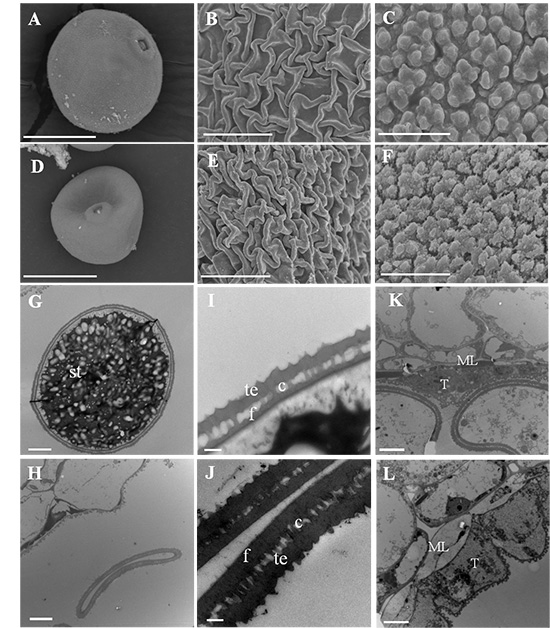分享到
The Rice AAA-ATPase OsFIGNL1 is Essential for Male Meiosis
Meiosis is crucial in reproduction of plants and ensuring genetic diversity. Meiosis is a critical step in gametogenesis, during which two rounds of cell division follow a single round of DNA replication, ending with formation of four haploid cells. Disturbing any step of this progress leads to severe dysfunction of meiotic cells, including aberrant chromosomes, abnormal pairing of homologs, reduction of chiasma frequency, and infertility. Although several genes involved in homologous recombination and DNA repair have been reported, their functions in rice (Oryza sativa) male meiosis remain poorly understood.
Recently, researchers at Key Laboratory for Zhejiang Super Rice Research and State Key Laboratory of Rice Biology, China National Rice Research Institute (CNRRI) of Chinese Academy of Agricultural Sciences (CAAS) have acquired progress on molecular mechanism of male sterility in rice. In this study, CNRRI scientists successfully identified a complete male sterility mutant Osfignl1. The rice Osfignl1 mutant exhibited normal vegetative growth, but failed to produce seeds and displayed pollen abortion phenotype. The OsFIGNL1 gene was cloned on chromosome 12 using map-based approach, which encoded a conserved AAA-ATPase, a member of the AAA (ATPase Associated with diverse cellular Activities) protein superfamily. Subcellular localization showed that OsFIGNL1-green fluorescent protein was exclusively localized in the nucleus of rice protoplasts. OsFIGNL1 is expressed in all tissues but predominantly in anthers at the meiosis stage, and progressively reduced as anther development proceeded. Cross section analysis, transmission electron microscopy, and scanning electron microscopy assays showed that the abnormal degradation of the tapetum occurs in Osfignl1 during late anther development and that mutation in the Osfignl1 mutant also affects the pollen wall formation. Male meiosis in the Osfignl1 mutant exhibited abnormal chromosome behavior, including chromosome bridges and multivalent chromosomes at diakinesis, lagging chromosomes, and chromosome fragments during meiosis. The phenotypic characterization of embryo sac development of differential stages showed that Osfignl1 embryo sacs had no obvious differences compared with wild-type plants, suggesting that OsFIGNL1 is only essential for male meiosis but not indispensable for female reproductive development. Yeast two-hybrid assays demonstrated OsFIGNL1 could interact with RAD51A1, RAD51A2, DMC1A, DMC1B, and these physical interactions were further confirmed by BiFC assay. Taken together, these results demonstrate that OsFIGNL1 plays an important role in regulation of male meiosis and anther development.



By Zhang Yingxin
zyxrice@163.com
Recently, researchers at Key Laboratory for Zhejiang Super Rice Research and State Key Laboratory of Rice Biology, China National Rice Research Institute (CNRRI) of Chinese Academy of Agricultural Sciences (CAAS) have acquired progress on molecular mechanism of male sterility in rice. In this study, CNRRI scientists successfully identified a complete male sterility mutant Osfignl1. The rice Osfignl1 mutant exhibited normal vegetative growth, but failed to produce seeds and displayed pollen abortion phenotype. The OsFIGNL1 gene was cloned on chromosome 12 using map-based approach, which encoded a conserved AAA-ATPase, a member of the AAA (ATPase Associated with diverse cellular Activities) protein superfamily. Subcellular localization showed that OsFIGNL1-green fluorescent protein was exclusively localized in the nucleus of rice protoplasts. OsFIGNL1 is expressed in all tissues but predominantly in anthers at the meiosis stage, and progressively reduced as anther development proceeded. Cross section analysis, transmission electron microscopy, and scanning electron microscopy assays showed that the abnormal degradation of the tapetum occurs in Osfignl1 during late anther development and that mutation in the Osfignl1 mutant also affects the pollen wall formation. Male meiosis in the Osfignl1 mutant exhibited abnormal chromosome behavior, including chromosome bridges and multivalent chromosomes at diakinesis, lagging chromosomes, and chromosome fragments during meiosis. The phenotypic characterization of embryo sac development of differential stages showed that Osfignl1 embryo sacs had no obvious differences compared with wild-type plants, suggesting that OsFIGNL1 is only essential for male meiosis but not indispensable for female reproductive development. Yeast two-hybrid assays demonstrated OsFIGNL1 could interact with RAD51A1, RAD51A2, DMC1A, DMC1B, and these physical interactions were further confirmed by BiFC assay. Taken together, these results demonstrate that OsFIGNL1 plays an important role in regulation of male meiosis and anther development.


This study was supported by grants from the National Key Transform Program (Grant No.: 2016ZX08001-002), the National Natural Science Foundation of China (Grant No.: 31501290), the Zhejiang Provincial Natural Science Foundation of China (Grant No.: LQ14C130003), and the Super Rice Breeding Innovation Team and Rice Heterosis Mechanism Research Innovation Team of the Chinese Academy of Agricultural Sciences Innovation Project (Grant No.: CAAS-ASTIP-2013-CNRRI). The research finding has been published in Frontiers in Plant Science online on September 27th, 2017 (DOI: https://doi.org/10.3389/fpls.2017.01639). More details are available on the link bellow:
https://www.frontiersin.org/article/10.3389/fpls.2017.01639/full#supplementary-material.
https://www.frontiersin.org/article/10.3389/fpls.2017.01639/full#supplementary-material.

By Zhang Yingxin
zyxrice@163.com
Latest News
-
 Apr 18, 2024Opening Ceremony of the Training Workshop on Wheat Head Scab Resistance Breeding and Pest Control in Africa Held in CAAS
Apr 18, 2024Opening Ceremony of the Training Workshop on Wheat Head Scab Resistance Breeding and Pest Control in Africa Held in CAAS -
 Apr 03, 2024IPPCAAS Co-organized the Training Workshop on Management and Application of Biopesticides in Nepal
Apr 03, 2024IPPCAAS Co-organized the Training Workshop on Management and Application of Biopesticides in Nepal -
 Mar 28, 2024Delegation from the School of Agriculture and Food Science of University College Dublin, Ireland Visit to IAS, CAAS
Mar 28, 2024Delegation from the School of Agriculture and Food Science of University College Dublin, Ireland Visit to IAS, CAAS -
 Mar 25, 2024Director of World Food Prize Foundation visited GSCAAS
Mar 25, 2024Director of World Food Prize Foundation visited GSCAAS -
 Mar 20, 2024Institute of Crop Sciences (ICS) and Syngenta Group Global Seeds Advance Collaborative Research in the Seed Industry
Mar 20, 2024Institute of Crop Sciences (ICS) and Syngenta Group Global Seeds Advance Collaborative Research in the Seed Industry
